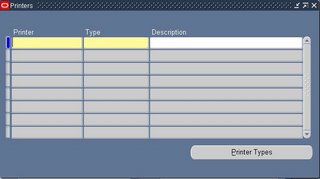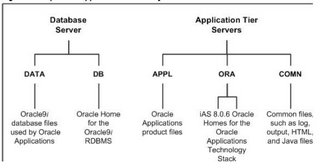This Performance Tuning is an Overview of from where to start if users start complaining
that
Oracle Applications is running slow. If you have not read previous post on
Performance Checks on 11i visit
These steps might be hepful when your 11i oracle is running slow .
Steps mentioned below are for Apps 11i which may or may not fit in all your performance scenariosFirst as an Over view of Oracle Applications 11i check following things Broad Level Steps to Check
1. Is Gather stats schedule ? ( atleast weekly ?)
2. Is Purge Obsolete Workflow request & concurrent request purging scheduled ?
3. Is there any runaway process on database tier or application tier ? ( runaway process is process taking unexceptionally long time with high CPU or Memory usages)
4. Any Discoverer process taking long time or High CPU ? ( Usually on Middle tier like dis4ws..) 5. Any Custom report taking long time ?In order to understand problem betterAs Next level you should ask questions to yourself or person encountering performance issues like
1. Is whole application is slow or only component of application is slow (like only Concurrent manager running slow)
2. If this is paritular component like reports server slow then is a particular report or all reports are slow ?
3. Is performance issue during all time or at specific time lets say from 11AM to 4PM ?
4. Was performance issue popped up recently or performance degradation is since long ?
5. Whats changed recently ?Depending on answers you can start looking into application like if issue is specific to whole applications then check
1. If database initialization parameter is set correctly ?
2. If application sizing is proper , server configuration is enough to accomodate all users ?
Is your applications sized properly ?
Is initialization parameters set up correctly ?
Are there any runaway processes in oracle
database tier or application tier ?
Is network connectivity between users & application server is fine , there is no delays ?
Latest techstack including jdbc drivers, forms, database, jdk can improve performance
considerably Check if system level trace is enabled ?
Is Purge schedule ?
Is gather stats scheduled ?
If Issue is with only particular type of reportsCheck if there are no performance bugs with that module ?
Are you on latest patchset for that product ?
Is it standard report or custom ? (If custom enable trace & use tkprof, If standard then
check in metalink if there is any issues reported by others)
If Issue is only during particular time lets say during night Check what's running during that time Is it because of backups ?
Is it because all resource intensive requests running in night ?
If Issue is with specific users Check if trace is enabled at user level ?
Is user client machine performing well ?
Is connectivity from client machine to server fine ?
This is just overview or starting point to check Performance Issues in Oracle applications
11i for Tuning Individual component like , Apache, JVM, Concurrent manager I'll post in my
future posts.
One of reader asked how to schedule Gather Stats or
How to schedule Purge Concurrent
Program or Obsolete workflow data.
These are concurrent requests & if you have "System Administrator Responsibility" login
with that then go to Request -> View -> Select "Specific Request" and under "Name" Text
Search for following requests
Gather Schema Statistics ( supply parameter schema name , apps & others)
Purge Concurrent Request and/or Manager Data ( supply retention period usually 90 days)Purge Signon Audit data
Purge Obsolete Workflow Runtime Data
Purge Obsolete Generic File Manager Data
If you are not aware of what is concurrent request or how to check don't worry wait for sometime till we come to sysadmin section & I'll update what to read & from where to read
about Oracle Application Sysadmin related to concurrent requests.
If you want to understand How to proceed with Oracle Applications 11i tuning check Metalink Note 69565.1
A Holistic Approach to Performance Tuning Oracle Applications Systems (Though quite old guide from year 2001 but good for approach)









